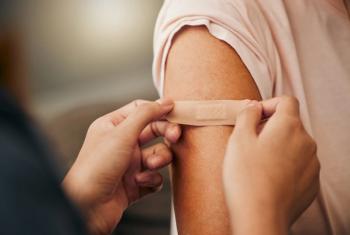
How kids’ cardiorespiratory fitness could impact health later in life
Children zoom all over the place in their play. A new meta-analysis looks at how the cardiorespiratory fitness from that running could impact later life health.
Playing and running around at top speed are a common activity of children. A new meta-analysis in
The investigators searched MEDLINE, Embase, and SPORTDiscus to find studies that were relevant to them. The inclusion criteria for them included studies that used a prospective cohort design with a follow-up period of at least a year, study participants who were healthy with a mean age of 3 to 18 years at the study’s baseline, and cardiorespiratory fitness was measured with a validated test and was assessed at the baseline and/or the change from baseline to the end of follow-up. They processed the data using the Preferred Reporting Items for Systematic Reviews and Meta-Analyses.
The researchers found 55 studies that included a total of 37,563 children and adolescents. They found weak-moderate associations during follow-up between cardiorespiratory fitness at baseline and:
- total cholesterol level (r = –0.12; 95% CI, –0.19 to –0.05; I2 = 75.81)
- high-density lipoprotein cholesterol (HDL-C) level (r = 0.11; 95% CI, 0.05-0.18; I2 = 69.06)
- total cholesterol to HDL-C ratio (r = –0.19; 95% CI, –0.26 to –0.13; I2 = 67.07)
- triglyceride levels (r = –0.10; 95% CI, –0.18 to –0.02; I2 = 73.43)
- homeostasis model assessment for insulin resistance (r = –0.12; 95% CI, –0.18 to –0.06; I2 = 68.26)
- fasting insulin level (r = –0.07; 95% CI, –0.11 to –0.03; I2 = 0)
- cardiometabolic risk (r = –0.18; 95% CI, –0.29 to –0.07; I2 = 90.61)
- body mass index (r = –0.11; 95% CI, –0.18 to –0.04; I2 = 59.03)
- waist circumference (r = –0.29; 95% CI, –0.42 to –0.14; I2 = 69.42)
- skinfold thickness (r = –0.34; 95% CI, –0.41 to –0.26; I2 = 83.87),
- obesity (r = –0.15; 95% CI, –0.23 to –0.06; I2 = 86.75)
The researchers found via meta-regression analyses that early association from baseline to follow-up lessened with time for the following:
- skinfold thickness (β = 0.006; 95% CI, 0.002-0.011)
- HDL-C level (β = −0.006; 95% CI, −0.011 to −0.001)
- triglyceride levels (β = 0.009; 95% CI, 0.004-0.014)
- waist circumference (β = 0.014; 95% CI, 0.002-0.026)
- cardiometabolic risk (β = 0.007; 95% CI, 0.003-0.011)
They also found weak-moderate links for later in life outcomes between change in cardiorespiratory fitness and the following:
- obesity (r = –0.21; 95% CI, –0.35 to –0.06; I2 = 91.08)
- HDL-C level (r = 0.05; 95% CI, 0.02-0.08; I2 = 0)
- low-density lipoprotein cholesterol level (r = –0.06; 95% CI, –0.11 to –0.01; I2 = 58.94)
- body mass index (r = –0.17; 95% CI, –0.24 to –0.11; I2 = 39.65)
- skinfold thickness (r = –0.36; 95% CI, –0.58 to –0.09; I2 = 96.84)
- cardiometabolic risk (r = –0.08; 95% CI, –0.15 to –0.02; I2 = 69.53)
The researchers concluded that cardiorespiratory fitness in childhood is linked with maintaining health characteristics later in life. They believe that the results indicate that early interventions and other programs that promote cardiorespiratory fitness could lead to improved health outcomes.
Reference
1. García-Hermoso A, Ramírez-Vélez R, García-Alonso Y, Alonso-Martínez A, Izquierdo M. Association of cardiorespiratory fitness levels during youth with health risk later in life. JAMA Pediatr. August 31, 2020. Epub ahead of print. doi:10.1001/jamapediatrics.2020.2400
Newsletter
Access practical, evidence-based guidance to support better care for our youngest patients. Join our email list for the latest clinical updates.










